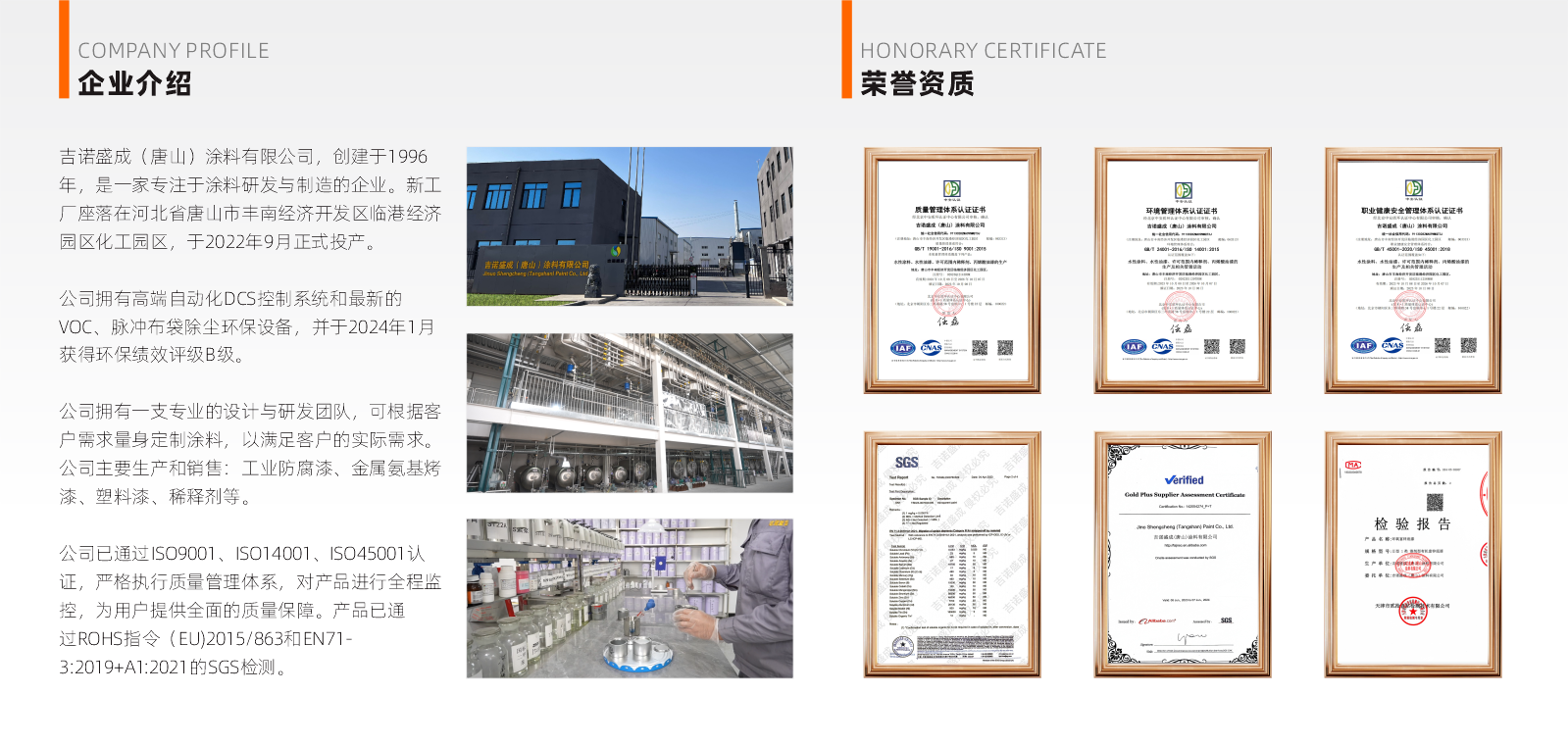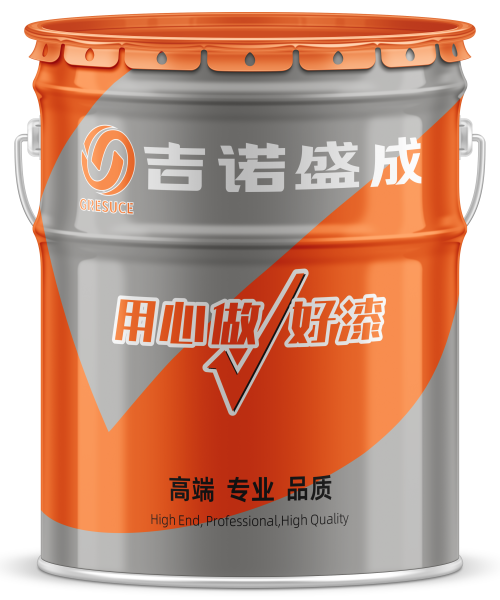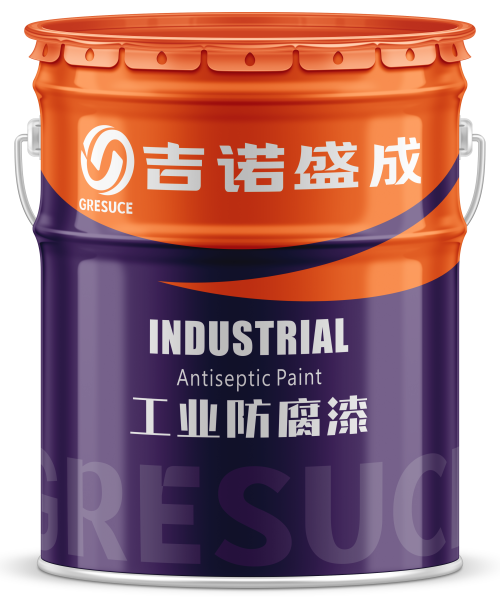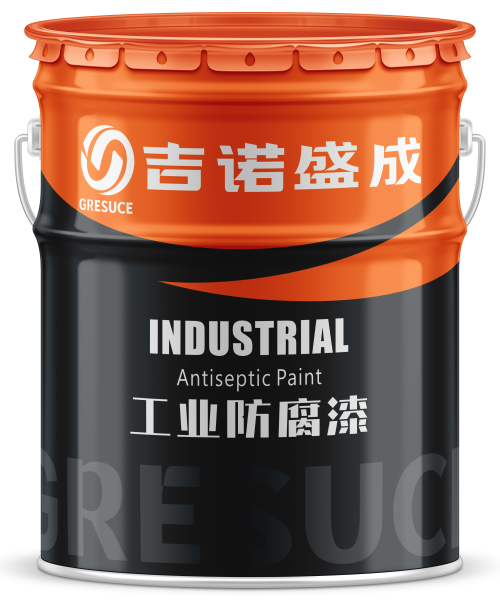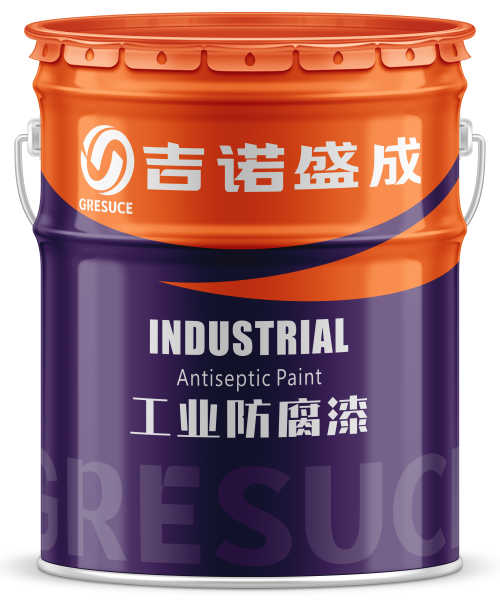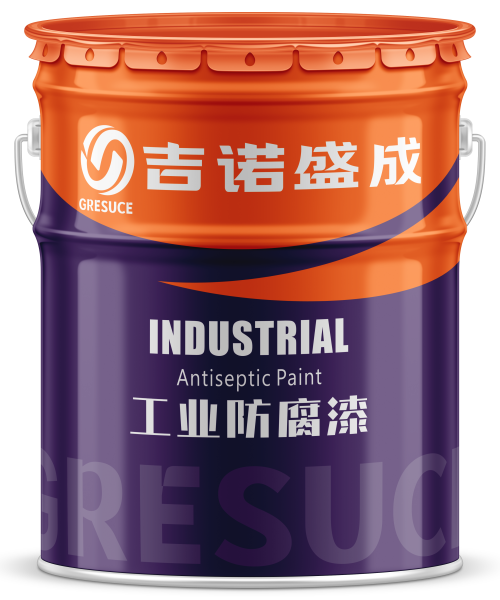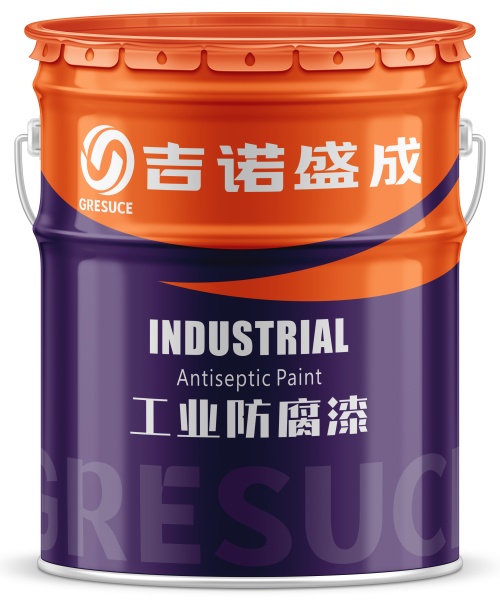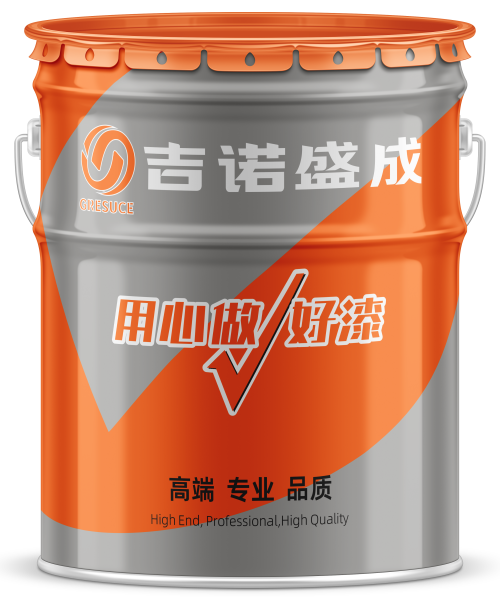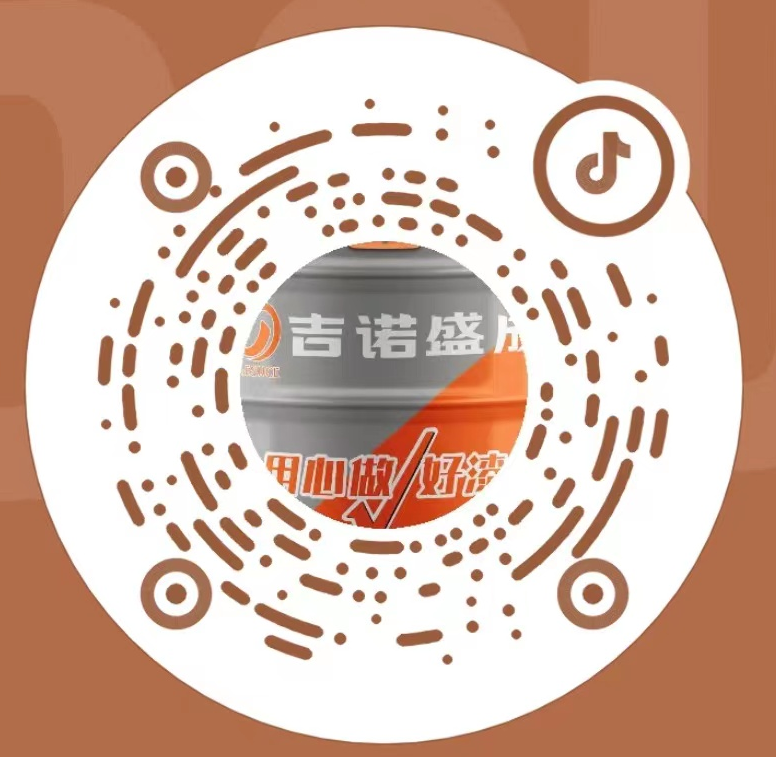Epoxy Zinc-Rich Primer
Composition and Characteristics:
1. Composition: Epoxy zinc-rich primer is primarily composed of epoxy resin and zinc dust. The epoxy resin provides excellent adhesion and mechanical properties.
2. Adhesion: The high adhesion of epoxy resin allows it to bond effectively to steel substrates, offering robust anti-corrosion protection.
3. Flexibility and Mechanical Properties: Epoxy zinc-rich primer exhibits good flexibility and impact resistance, making it suitable for use in harsh environmental conditions.
4. Anti-Corrosion Performance: Through the principle of cathodic protection, the zinc dust in the coating forms an electrochemical barrier, effectively preventing the corrosion of steel.
Applications:
1. Marine Environments: Due to its excellent anti-corrosion performance and adhesion, epoxy zinc-rich primer is widely used for protecting steel structures in marine environments, such as ships, docks, and offshore facilities.
2. Heavy Industry: It is suitable for anti-corrosion applications in heavy industrial equipment, including petrochemical facilities, bridges, and storage tanks.
Inorganic Zinc-Rich Primer
Composition and Characteristics:
1. Composition: Inorganic zinc-rich primer is primarily composed of inorganic binders such as silicates or phosphates and zinc dust. After curing, the inorganic binder forms a hard, inorganic network structure.
2. High-Temperature Resistance: Inorganic zinc-rich primer exhibits excellent high-temperature resistance, typically withstanding temperatures above 400°C.
3. Weather Resistance: The inorganic coating offers superior weather resistance, maintaining effective anti-corrosion performance even under prolonged exposure to outdoor environments.
4. Hardness and Brittleness: The cured inorganic zinc-rich coating is highly hard but relatively brittle, lacking some flexibility.
Applications:
1. High-Temperature Equipment: Due to its excellent high-temperature resistance, inorganic zinc-rich primer is suitable for anti-corrosion applications in high-temperature environments, such as chimneys, boilers, and other heat-exposed equipment.
2. Long-Term Outdoor Exposure: It is ideal for steel structures that require long-term exposure to outdoor conditions, such as transmission towers and electrical equipment.
Key Differences:
1. Binder Type: Epoxy zinc-rich primer uses epoxy resin as the binder, while inorganic zinc-rich primer uses inorganic binders (e.g., silicates or phosphates).
2. Temperature Resistance: Inorganic zinc-rich primer offers superior high-temperature resistance, making it suitable for high-temperature environments, whereas epoxy zinc-rich primer may degrade under extreme heat.
3. Flexibility: Epoxy zinc-rich primer provides better flexibility and impact resistance, while inorganic zinc-rich primer is harder but more brittle.
4. Application Environment: Epoxy zinc-rich primer is more suitable for marine environments and heavy industrial equipment, while inorganic zinc-rich primer is better suited for high-temperature equipment and structures exposed to long-term outdoor conditions.
Summary
Epoxy Zinc-Rich Primer and inorganic zinc-rich primer each have their unique advantages and suitable applications. Epoxy Zinc-Rich Primer, with its excellent adhesion and mechanical properties, is widely used for anti-corrosion in marine and heavy industrial environments. On the other hand, Inorganic Zinc-Rich Primer, with its high-temperature resistance and weather resistance, is ideal for high-temperature equipment and steel structures exposed to long-term outdoor conditions. When selecting the appropriate primer, it is essential to consider the specific application environment and anti-corrosion requirements to achieve optimal protection.
